Glistening Inkcap / Spring / Summer / Autumn / Edible
Welcome to a world of delicate culinary delights as we celebrate the captivating flavors of the Glistening Inkcap (Coprinellus micaceus).
Join us on a journey where gastronomy meets elegance. With its distinctive appearance, featuring glistening caps and slender stems, the Glistening Inkcap stands as a jewel among edible mushrooms. Learn to identify its unique features, discover its preferred habitats, and delve into the culinary wonders it offers. From its tender texture to its delightful nutty flavor, this mushroom holds the power to elevate your culinary creations to new heights.
Whether you are an experienced forager or a curious home cook, let the Glistening Inkcap inspire your culinary endeavors and awaken your taste buds to its exquisite flavors. Embrace the beauty of nature’s bounty as we celebrate the enchanting delights that lie within the Glistening Inkcap. Get ready to embark on a flavor-filled journey as we explore the captivating culinary possibilities offered by this remarkable mushroom.
A common mushroom, very similar looking to the Common Inkcap but they’re much smaller, often growing in massive tight clusters and with a powdery ‘mica’ coating giving them a glistening look.
Scientific Name
Coprinellus Micaceus
Common Names
Glistening Inkcap, Mica Cap, Shiny Cap
Family
Psathyrellaceae
Habitat
On dead wood, logs and stumps of hardwoods. Usually appearing in large tufts or groups. They are quite often found on disturbed sites for example building yards, cars etc.
Identifying Features:
Cap:
They are greyish/brown in colour, conical or bell-shaped when young, they flatten out with age before almost melting into black ink. The cap has tiny furrows running down the length which often split as the mushroom matures. The cap is covered with a fine ‘mica’ coating giving it a ‘glittery’ appearance. This coating is easily washed off in rain.
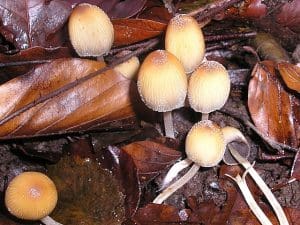
Stem:
Thin and fibrous, normally white when young turning grey with age.
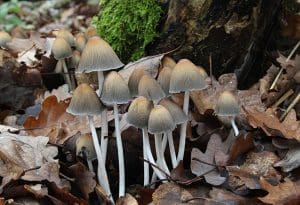
Gills:
The gills are very crowded and free. When young they are pale in colour but very soon darken before turning into ink. This process is called deliquescing.
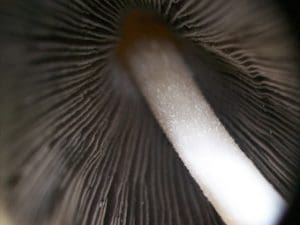
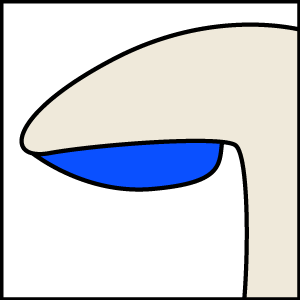
Smell:
Mushroomy.
Spores:
Dark brown to black.
Uses
In food
Unlike the Common Inkcap (Coprinopsis Atramentaria) which reacts with alcohol and are therefore considered toxic the Glistening Inkcap is an edible species although it has very little nutritional value or taste.
It is best mixed with other mushroom for example in a cream sauce to serve with pasta.
You can pop the caps in a jar with 5% salt and wait a day for them to turn in to black ink and use that as a substitute for squid ink in making black mashed potato or black pasta.
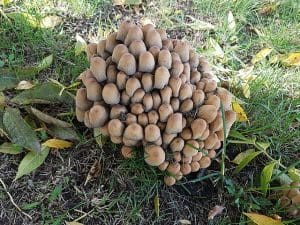
Harvesting
Only caps that have the ‘mica’ coating should be harvested. The ‘mica’ coating can be washed off by the rain at which point they look similar to the Common Inkcap (Coprinopsis Atramentaria) which are toxic. The main differences are that the glistening ink cap is more orange/buff in colour, much smaller in size and grow in big stuffed clusters. The Common ink cap is more grey in colour, larger and grows less in big bunches and tufts.
Known hazards
This species can bio-accumulate heavy metals like lead and cadmium, it has been advised to restrict consumption of specimens collected from roadsides or other sites that may be exposed to or contain pollutants.
Potential lookalikes
Only caps that have the ‘mica’ coating should be harvested. The ‘mica’ coating can be washed off by the rain at which point they look similar to the Common Inkcap (Coprinopsis Atramentaria) which are toxic. The main differences are that the glistening ink cap is more orange/buff in colour, much smaller in size and grow in big stuffed clusters. The Common inkcap is more grey in colour, larger and grows less in big bunches and tufts.
Leave a Reply
You must be logged in to post a comment.



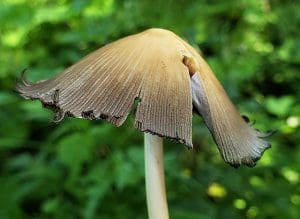
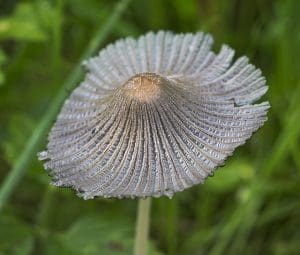



1 reply on “Glistening Inkcap (Coprinellus Micaceus) Identification”